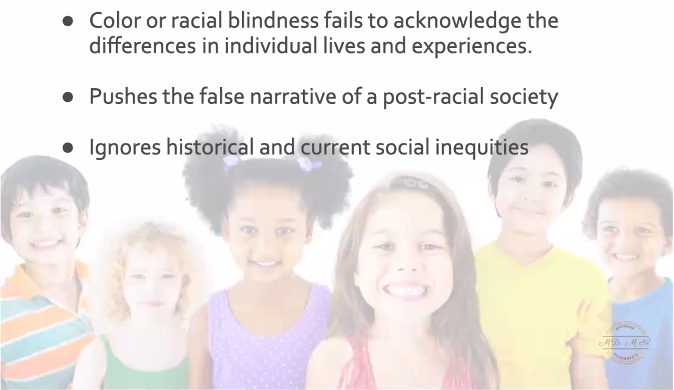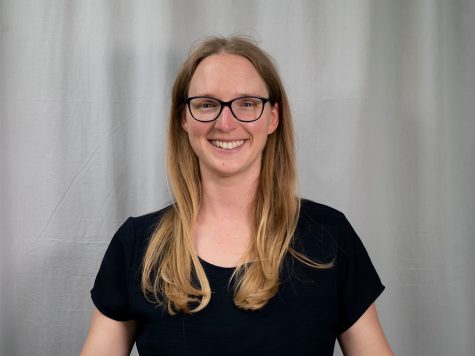Early childhood education researcher Michelle DeJohnette called on teachers to be anti-racist and acknowledge the diversity of their students rather than taking a “colorblind” approach that treats all students the same at a Women’s History Month Zoom lecture March 15.
“[Teachers] say things like, ‘I don’t see color,’ or ‘I treat all my children alike,’ with the best intentions, that that’s the way to end racism,” Ph.D. student DeJohnette said. “I’m here to tell you that it’s not. It’s not going to end racism and it’s impossible to do.”
“Ask yourself, if you say ‘I treat everyone the same,’ the same as whom? If I don’t see color, then everyone is white? Everyone is brown? What we want to do is individualize each person, especially your young students. We want to acknowledge that each person is different.”
DeJohnette researches how preschool teachers view discipline as part of a joint doctoral program at San Diego State University and Claremont Graduate University. She also studies culturally responsible pedagogy, anti-bias/anti-racist education and inequity in early childhood education.
Motivated by the inequity students of color experience in the education system, DeJohnette’s 2016 study found Black children in California make up only 19% of the preschool population, but account for nearly 50% of suspensions in that age group.
Early and repeated disciplinary actions like suspensions leave students without a sense of belonging that ultimately feeds them into the preschool-to-prison pipeline.
“They’re being forced out of the educational environment,” DeJohnette said. “And so the process begins: ‘I don’t belong here. I can’t catch up. I’m not good enough. I’m not smart enough.’”
The remedy for bias in the school system is not to treat everyone the same.
DeJohnette defined “colorblindness” as, “the racial ideology that posits the best way to end discrimination is by treating individuals as equally as possible, without regard to race, culture, or ethnicity. ”
“I don’t want you to not see your students’ race or their culture, their ethnic culture, their religious culture, their home culture, their neighborhood culture. All of that is part of that student and they bring that with them to the classroom,” DeJohnette said.
Acknowledging the diversity students bring with them helps teachers understand which students need more help and resources, and thus better serve them.
Anti-racist education includes how teachers interact with students and the curriculum they teach.
According to a 2017 PBS News Hour report, some Bay Area preschools use an anti-bias curriculum that teaches students to notice and talk about differences by making observations, asking questions and creating art projects.
According to anti-bias educator Louise Derman-Sparks, curriculum must start early because children start to notice differences by the ages of three or four.
“They’re beginning to develop and to absorb the stereotypes and misinformation,” Derman-Sparks said. “The myth that they aren’t noticing, the idea of being ‘colorblind,’ actually harms kids.”
DeJohnette encouraged teachers to critically reflect on their teaching and biases, however uncomfortable that might be, so they can better support students as anti-racists.
“Racism is infused into our systems,” DeJohnette said. “My opinion is that you have to be anti-racist. You have to actively push back, challenge the system daily. There are only two camps: you’re either an anti-racist or you’re participating in racism. There’s no neutrality.”




